A high-speed railway offers opportunities. The improvements in connectivity, and the benefits that they bring, have the potential to transform cities.
Using proven technology, HS routes can bring positive change not just for a city, but a region, and even a country. That is what High Speed 2 is really about. Rail Minister Claire Perry offers a vision of the positive change and great opportunities HS2 will offer, but what about the view from those charged with designing and building it?
Professor Andrew McNaughton is HS2 Ltd’s Technical Director. In his home city of Leeds, he spoke eloquently about the possibilities that HS2 will bring. He also highlights Birmingham, stating: “Birmingham interchange is, of course, close to the most central airport in the country. But that’s not really what it’s about, it’s about Solihull and a Solihull idea, not an HS2 idea. It’s about creating a new sustainable city which is more central for the UK.”
McNaughton discusses capacity on the current network. It’s worth remembering that since privatisation the number of yearly passengers using the railway has increased from 800 million to more than 1.6 billion. This has all been over a network that was built in Victorian times, and while there have been upgrades and capacity improvements, sooner or later it was bound to need more capacity.
And the population is growing. In 2008, the population of Great Britain was 52 million. In 2033 it is expected to have risen to 60m and in 2050 it will likely be 70m. McNaughton highlights that there are 41m people living in city regions today, and that is projected to rise to 61m by 2050.
Says McNaughton: “With all that growth, of course, we are at capacity, but bursting with opportunity.” The capacity afforded by HS2, he says, is the same as two motorways, and yet HS2 could be a twin-track railway. “And it’s about boosting this connectivity between cities.”
He wants a railway that people feel they can rely on, too. “It’s no good if you can’t rely on it. This is the way people should travel between cities in the 21st century.”
He highlights that HS2 has a very challenging specification, but points out that high-speed railways are not new. It’s proven, 51-year-old technology. Since 1964, almost 25,000km of high-speed track has been laid around the world. By 2024 that is expected to be around 37,000km, with HS2 adding to that figure two years later.
“This the first 21st century railway so we’re not designing it like a 19th century railway; we’ve designed it virtually.” He says that HS2 Ltd has constructed a virtual railway prototype, which is helping HS2 to predict and visualise the project’s results. When it is built, it must be built to last. And surely, the next generation of railway must at least match the longevity of our Victorian system? “What we build, operate and maintain is for the next 150 years,” says McNaughton. “Everything about that railway is first being created digitally.
“When we go and talk with people about the effects of High Speed 2, we don’t show them a plan and engineer’s drawing, because unless you’re an engineer, it’s meaningless. We take a tablet PC and show them a virtual image of what a particular element of the railway will really look like in situ.”
He highlights the need to innovate, to build HS2 in a new and different way, and learn lessons from the mistakes of past projects. Ignoring them and not embracing new technology would be perilous, he explains.
“We’re not going to do that. And we’re not going to do it the way it’s always been done. So many people in my team have never built a railway before and this will bring a fresh approach.”
With the virtual prototyping software that the company uses, it is possible to show stakeholders rendered images showing every single effect, every embankment, cutting and plot of land affected by the railway. The technology enables HS2 to show what the exact effect will be on people in that area, how long it will take to construct the railway, and the cost and profile of the infrastructure.
One of the major criticisms is disruption to the countryside. HS2 Ltd has never shied away from these arguments, and always sought to highlight what is being done to mitigate these concerns.
McNaughton is matter-of-fact about the issue: “We value our countryside and getting that balance has been a huge part of our work. We are creating the most environmentally sensible railway in the world because we want to, not because we have to.”
When it comes to modelling these environmental effects, everything is done twice. “Once, virtually and once in reality.” He explains why: “The design won’t be approved until we’ve proven to ourselves that we can operate and maintain this railway in a simulation. We’ll have a solid understanding of the practicalities before we’ve even put a spade in the ground.
Design lessons have been learned from the only other high-speed railway in the country, HS1. He says: “Our design principles are the result of studying HS1, because learning from the past is vital. HS2 is not about a railway that will plough through the countryside regardless, it’s about blending the railway into the landscape, without spoiling it.
“We want to improve every part of the country HS2 passes through and that’s quite a tough goal. We have to traverse some incredibly sensitive environments, where we can’t just go in mob-handed with concrete and steel. We have an independent design panel, some members of which are appointed by the Secretary of State, who will hold us to a very high standard throughout. This railway is going to be here for at least 200 years and we have to get it right.”
He says that new techniques are being used to plan how construction will be completed in difficult locations. This will help HS2 plan the best working practices then justify how and why the work was done.
“The project also features a significant amount of environmental habitat replacement, or improvement. We’re working with Birmingham at the moment on a new green corridor into the centre of Birmingham through re-generated land. HS2 has a broad remit - it’s not just about a new train service, it’s about leaving a legacy for the country.”
McNaughton makes the point, however, that HS2 has one huge advantage: it’s a blank canvas, free from the inevitable constrictions and compromises of using existing track.
He talks of different methods not currently used on the main line. McNaughton mentions Automatic Train Operation (ATO), “but with a fully skilled driver at the front of it.” McNaughton says that while ATO is one option, re-organising how the railway works is another. He is anxious to break down barriers to efficiency. HS2 doesn’t want that. “We don’t want a divide between operations and maintenance. They are often at loggerheads, and I’ve spent most of my life dealing with it.”
He speaks of an organisational map, in which all the parts are joined and where there are no no barriers to “the most valuable asset we’ve got at the moment - information.”
And the virtual model of the railway, which is also proving invaluable already, he says, will be just as useful in the future: “The same virtual model that we use in Parliament to demonstrate the effects of constructing HS2, is the foundation of the system that, in 20 years’ time, people will be using to operate and maintain passenger services on HS2.”
Ultimately, HS2 is about passengers. McNaughton says that without them the railway won’t be a success. “For all the big words about bringing the country together, providing transport systems for the future and so on, HS2 will only work if people want to use it.”
HS2 Ltd, he says, is taking a global view of what passengers really value from a transport system. He says: “Throw away your conceptions of what the railway is today or any other transport system, how would you like it to be? We’ve also been studying people’s expectations through Transport Focus, a panel of independent people who travel a lot. Some of them are rail users, some aren’t, but they are travellers of some kind. They have been helping us design this.”
A key element, he says, is about how HS2 will transport massive numbers of people between major cities. The key is to give them control of their whole journey. He says that passenger survey feedback revealed that passengers don’t just want to choose their ticket, train and seat. They want a choice of environment - for example a quiet and peaceful section, or in a place where they can travel with their families. Selecting those travel options must also be
easy and intuitive.”
He discusses expanding the role of staff. Working on the train will not just be about carrying out specific tasks, it will be about helping people. McNaughton explains: “By working with the company which organised
the staff for the Olympics, we’ve learned a lot about how staff can improve customer experience.” He talks of access. “We want level access, not just because it’s available to all under some EU regulation. Everything we make easier for people who need extra assistance makes it easier for every passenger. We want people to travel on this railway not because they have to, but because they want to.”
A cornerstone of HS2 must be reliability. As McNaughton says, “everything we are engineering into this railway or building into the operational model is built with durability in mind. “It will be dependable. All the people involved in designing this railway are focusing on reliability.
“If your company makes a product that could make HS2 better, we’re interested. But don’t call us until you can prove it won’t let people down.”
- This feature was published in the HS2 supplement of RAIL 789 (December 9 2015)

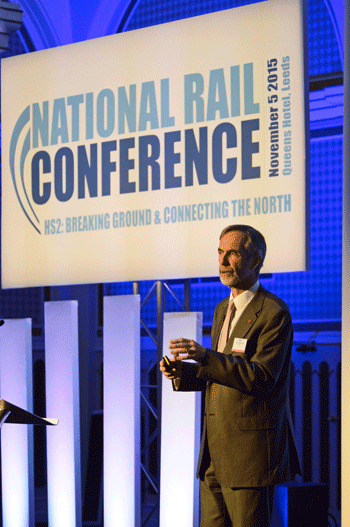
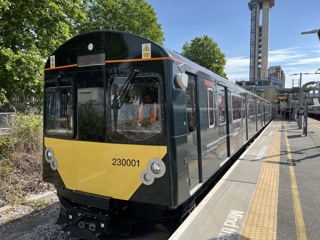
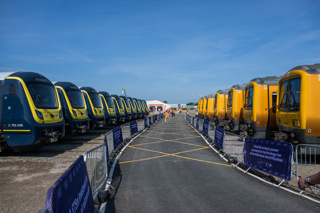
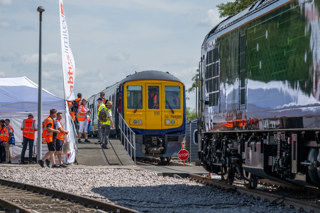
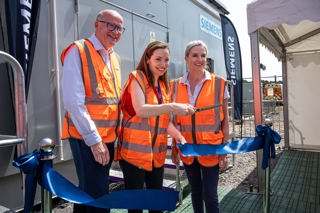
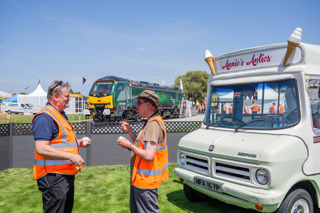





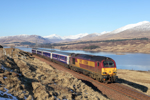


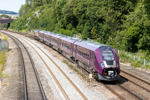


Login to comment
Comments
No comments have been made yet.